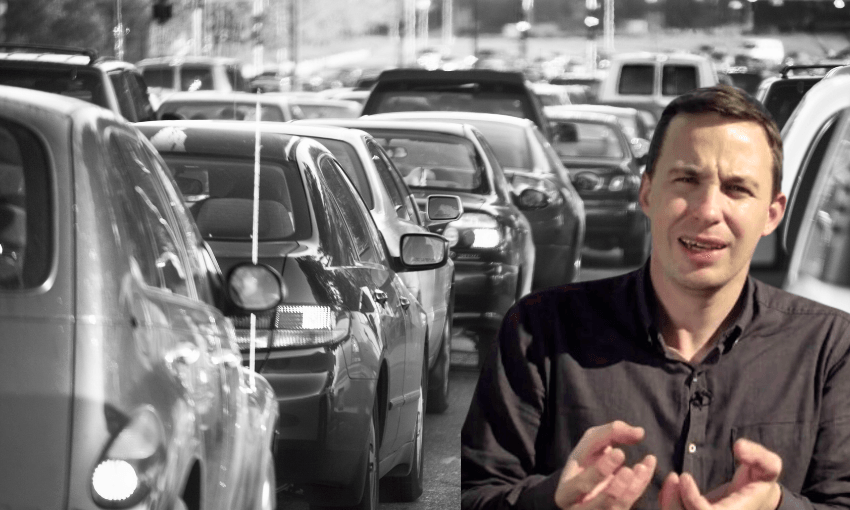Please listen.
Today is my last day as a fill-in Spinoff staff writer. These five weeks have been filled with incisive storytelling, literary achievement, and most of all, men with eels in their bums. Sadly now it’s over. But if I had to leave you with one message, it would be that traffic is made of cars.
Traffic is made of cars. The other day there was a story about people not being able to get to the airport because they were stuck behind other people waiting to get into the new mall. Do you know the problem? Too many cars. Why were there too many cars? Because there’s almost no other way to get to the airport or the mall. When you don’t give people other ways of getting around, everyone takes a car, and when lots of cars are together, that’s called traffic jam.
“Wah wah wah,” you might say. “I saw a bike lane with no bikes in it.” First of all, irrelevant. If that bike lane was one quarter of a car lane, cars would drive there, and traffic is made of cars. Second of all, untrue. As many people travel into the city centre every day on bikes as on ferries. You just don’t see them because they’re small, sneaky, and sometimes behind a wall.
“Just add an extra car lane,” you might say. “Then there will be no traffic jam.” Many problems. 1. Not enough space. Cars are big and weigh many kilograms. 2. Too expensive. Roads are 10 billion dollars. 3. Pointless. Every time we widen a motorway it fills up with cars, and traffic is made of cars. In Texas they made a 26-lane freeway and it made traffic worse than before.
But here is good news. If we remove car lanes, poof! Traffic often goes away. On Quay St they took away two car lanes and added two bike lanes and bus lanes. There is less congestion now. Why? Fewer cars. There were 19,841 cars per day there in 2018 and only 9867 per day now.
Please help. I don’t know how to explain this. I have written so many articles. “The city is committed to a motorway system and all projections indicate that an increasing number of people will want to drive to the Central Area,” said the 1955 Master Transport Plan. We’ve been building motorways ever since. Seventy years. More congestion than ever before. Not working.
Soon we’re going to build more new motorways to deal with the problems created by the old new motorways, and in the future a politician will stand up and say they need to build more new motorways to deal with the problems caused by these new motorways, and it will go on forever until I die and moulder away in the ground and eventually am paved over by a new motorway.
It is enough to drive a man a little bit batty. But thankfully I am fine. Okay I have to drive home now. Google says it’s one hour in heavy congestion. Why? Probably due to all the bike lanes.



